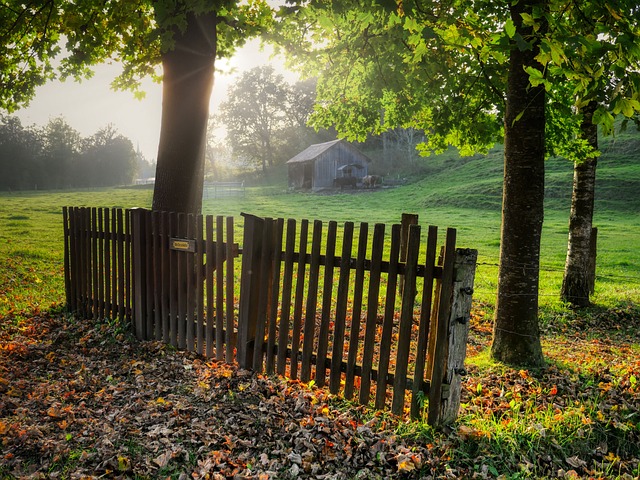In New Bedford, a well-maintained fence is not just an aesthetic addition but also a functional one. This article delves into the essential aspects of fence repair and installation in the region, focusing on common damage patterns unique to local climates and terrain. We guide property owners through selecting the ideal fencing material for their needs, offer a step-by-step installation process, and share expert tips for routine maintenance and effective repairs. By understanding these key elements, homeowners can ensure their fences stand strong against New Bedford’s challenges.
- Understanding Common Fence Damage in New Bedford
- Choosing the Right Fence for Your Property
- Step-by-Step Guide to Fence Installation
- Tips for Effective Fence Maintenance and Repair
Understanding Common Fence Damage in New Bedford
Fences in New Bedford, like anywhere, are exposed to various elements and potential hazards that can cause damage over time. Common issues include rot, caused by prolonged moisture and lack of proper treatment, especially in older wooden fences. Weather conditions, such as strong winds, storms, and heavy snow, can lead to structural instability and board replacement needs. Additionally, fencing may sustain injuries from vehicles, animals, or careless human activities, resulting in broken or missing pickets. Holes and gaps also develop over time due to normal wear and tear, requiring repairs to maintain privacy and security.
Regular inspections are crucial in identifying these issues early on. Homeowners should look out for signs of decay, loose connections, and any visible damage. Prompt attention to these problems can prevent further complications and costly replacements. Understanding the typical causes of fence damage helps residents of New Bedford make informed decisions when hiring professionals for repair or installation services.
Choosing the Right Fence for Your Property
When considering fence repair or installation in New Bedford, choosing the right type is a crucial first step. The ideal fence should suit your property’s unique needs and aesthetic preferences. For instance, if privacy is a priority, a tall wooden or vinyl fence can effectively block out views while enhancing curb appeal. On the other hand, if you’re looking for something low-maintenance, chain link fences are durable and easy to care for.
Fences also come in various styles, from traditional picket fences that offer a charming, classic look to more modern designs like horizontal slat fences or sleek metal panels. Material choices vary too, with wood, vinyl, iron, and chain link each offering distinct advantages in terms of durability, cost, and visual appeal. Take the time to assess your needs and preferences before making a decision to ensure your new fence meets both functional and aesthetic expectations for years to come.
Step-by-Step Guide to Fence Installation
To install a new fence, start by assessing your property and choosing the right fence type for your needs and aesthetic preferences. Next, obtain any necessary permits from local authorities. Clear the installation area by removing plants, debris, and other obstacles. Mark out the fence line using string or stakes to ensure a straight and level path.
Dig holes for the posts using a post-hole digger, ensuring each hole is deep enough (typically one-third to half the height of the post) and filled with concrete to secure the posts firmly in place. Allow the concrete to set completely before attaching the fence panels or rails according to manufacturer instructions. Regularly inspect your work throughout the installation process for accuracy and quality control.
Tips for Effective Fence Maintenance and Repair
Regular maintenance is key to prolonging the lifespan of your fence. Inspect it frequently for any signs of damage, such as broken or loose boards, bent posts, or rusted hardware. Address these issues promptly to prevent further deterioration. Keeping the fence clean and free of debris is also essential; sweep and power-wash regularly to remove dirt and grime that can attract pests and weaken the structure.
During repairs, ensure you use high-quality materials that match the original fence’s style and finish. Keep spare parts on hand for quick replacements. Consider adding a protective coat of paint or sealant after repairs to shield the fence from the elements and enhance its durability. Regular maintenance and timely repairs will help keep your fence looking its best for years to come.
